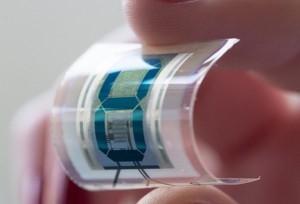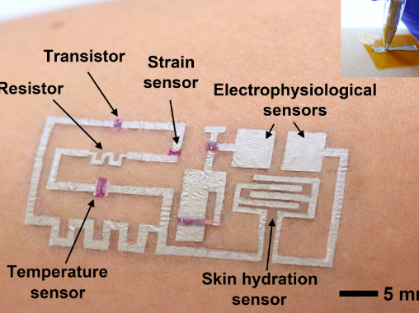Microelettronics

In the "post-silicon" era of microelectronics, numerous research efforts are aimed at developing innovative materials with superior performances. Wide bandgap semiconductors are largely studied for power devices, while thin films of transparent and conductive materials find application in both solar cells and touch screen devices. Ultra-thin materials (down to the thickness of a single atom) are being investigated to develop applications of printable, inexpensive and flexible electronics.
Semiconduttori ad ampia banda proibita
.jpg)
Faculty: L. Calcagno, M.G. Grimaldi, S. Mirabella, A. Scandurra
The development of semiconductor-based microelectronics has recently seen significant progress with the increasingly massive use of wide bandgap semiconductors (e.g. SiC and GaN) for applications such as handling large high-power electrical loads and telecommunication with advanced standards. SiC, being a "visible blindness" and "radiation hard" material, is also used for the construction of detectors (UV, charged particles and neutrons) that can operate in the presence of visible light and in nuclear physics experiments in which they are used high intensity beams. While production technologies for silicon-based microelectronics enjoy over ten years of development, a new international research front is now very active to make the most of the properties of alternative materials with a wide band gap.
Materiali trasparenti e conduttivi

Faculty: A. Terrasi, F. Torrisi
Transparent Conductive Materials (TCM) are a class of thin films (often doped semiconductor oxides) that find applications in various sectors: photovoltaics, transparent electronics, adaptive windows, OLEDs. These are mostly thin films (from a few tens to hundreds of nm) that combine a high optical transparency in the visible with a fair electrical conductivity (almost metallic). In this way it is possible to obtain an electrical response following the passage of light through the material (for example with photovoltaic cells) or, vice versa, an optical response following an electrical input (for example touch screens).
Materiali bidimensionali flessibili e/o indossabili

Faculty: A. A. Leonardi, F. Torrisi
Graphene and two-dimensional (2D) materials are a class of extremely thin materials, in some cases only one atom thick, and at the same time flexible and with properties of semiconductors, conductors or insulators. Flexible and printable electronic and optoelectronic devices based on 2D materials are highly competitive, demonstrating electrical and optical properties superior to conventional flexible electronics and opening the door to wearable electronics. The group is a pioneer in the development of flexible and wearable electronics with 2D materials for sensor, optoelectronic and energy applications.